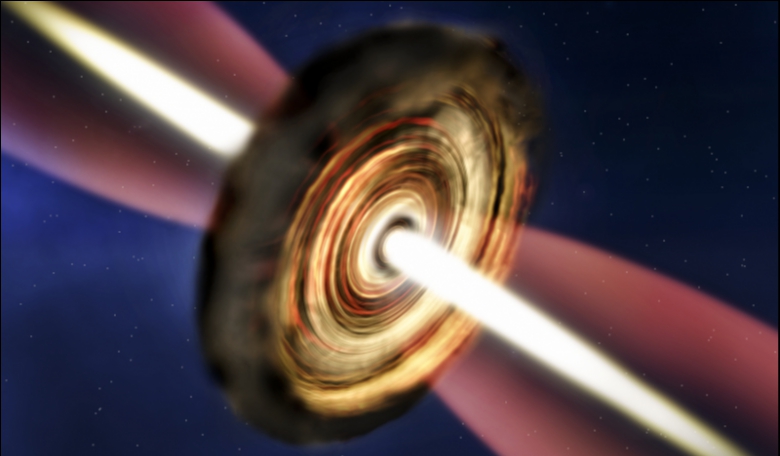Researchers at the University of
Cambridge have identified a young star located almost 11,00 light
years away. The star is already more than 30 times the mass of our
Sun and is still growing. The discovery and results of the study
could help scientists understand how massive stars are formed and
will be presented this week at the Star Formation 2016 conference
held at the University of Exeter.
According to Dr. John Ilee at Cambridge's Institute of Astronomy, the study's lead author, "An average star like our Sun is formed over a few million years, whereas massive stars are formed orders of magnitude faster—around 100,000 years. These massive stars also burn through their fuel much more quickly, so they have shorter overall lifespans, making them harder to catch when they are infants."
Another reason why it's sometimes hard to observe a young star is that they are typically surrounded by a thick cloud of gas and dust. In this study, researchers used both the Submillimeter Array (SMA), located in Hawaii, and the Karl G. Jansky Very Large Array (VLA), located in new Mexico. The long wavelengths used by these arrays allowed astronomers to peek into the opaque cloud surrounded the young star. Astronomers where also able to determine the presence of a “Keplerian” disc that rotates more quickly at its center than at its edge. "This type of rotation is also seen in the Solar System - the inner planets rotate around the Sun more quickly than the outer planets," said Ilee. "It's exciting to find such a disc around a massive young star, because it suggests that massive stars form in a similar way to lower mass stars, like our Sun."
According to initial observations, the star is estimated to be over 30 times the mass of the Sun, with the surrounding disc about two or three times the mass of the Sun. The researchers will continue to observe the star and the surrounding region with the Atacama Large Millimetre Array (ALMA) in Chile, in hopes of discovering potential companion stars and in order to learn more about this massive youngster in our galaxy.











